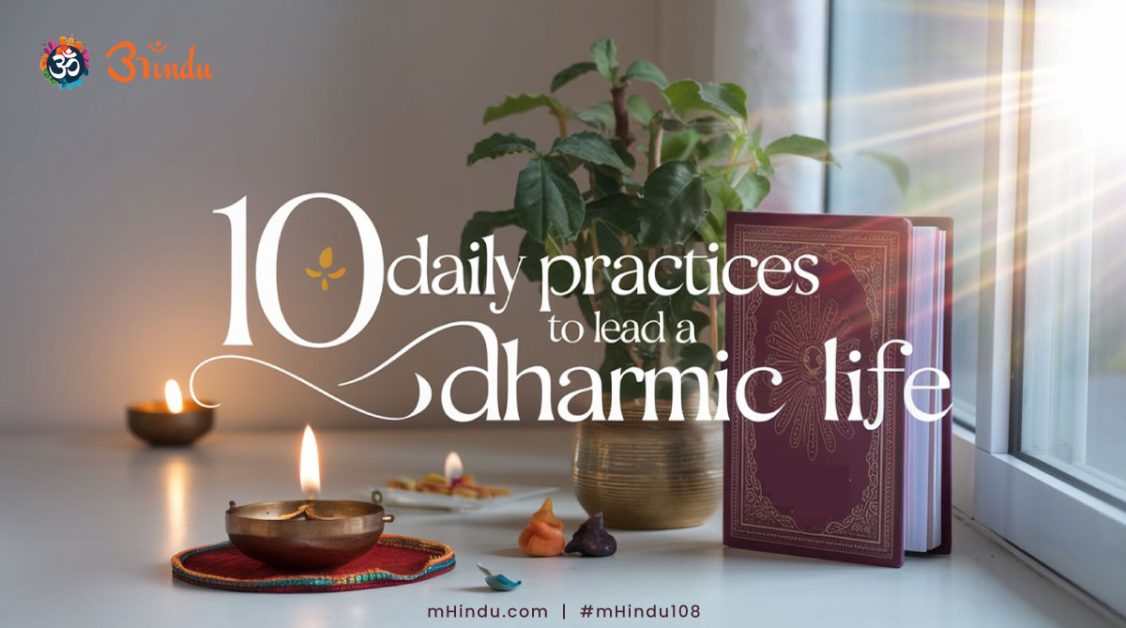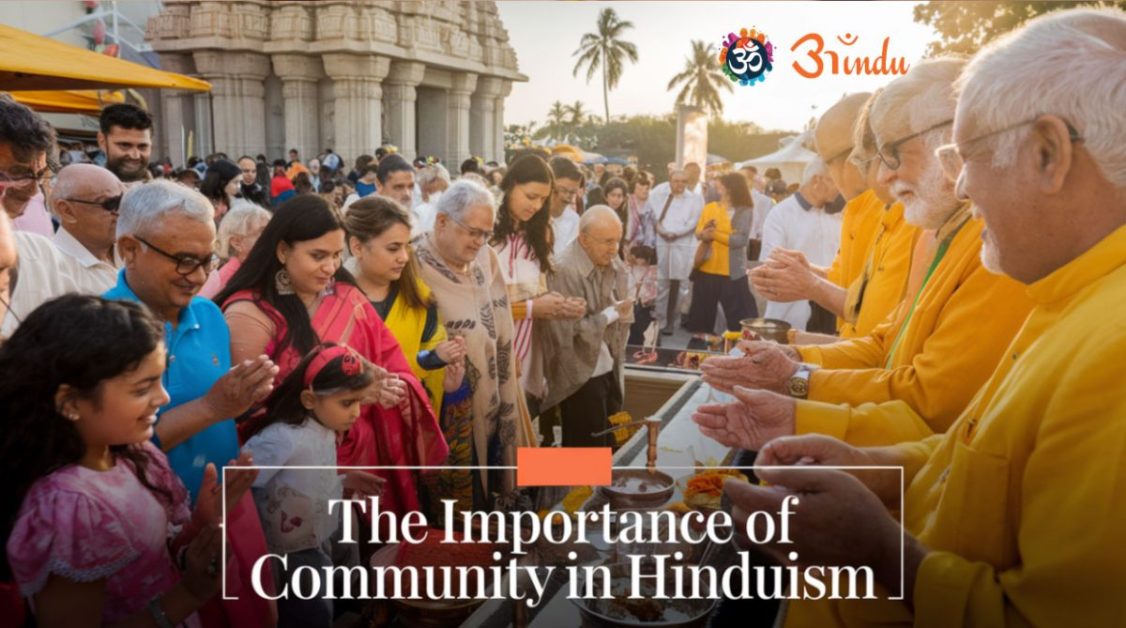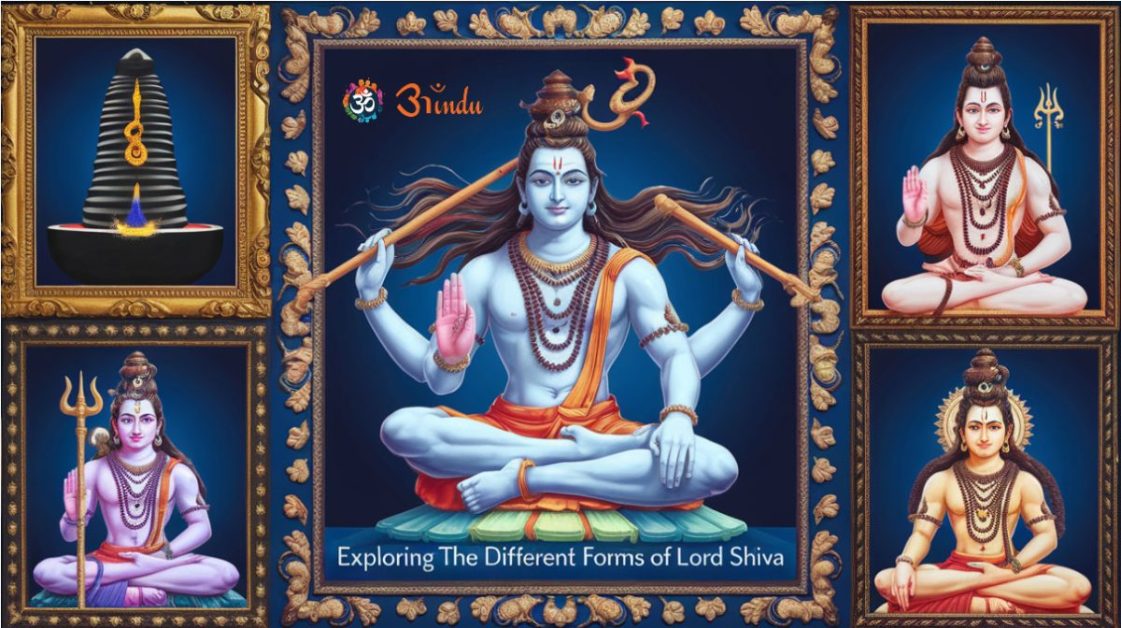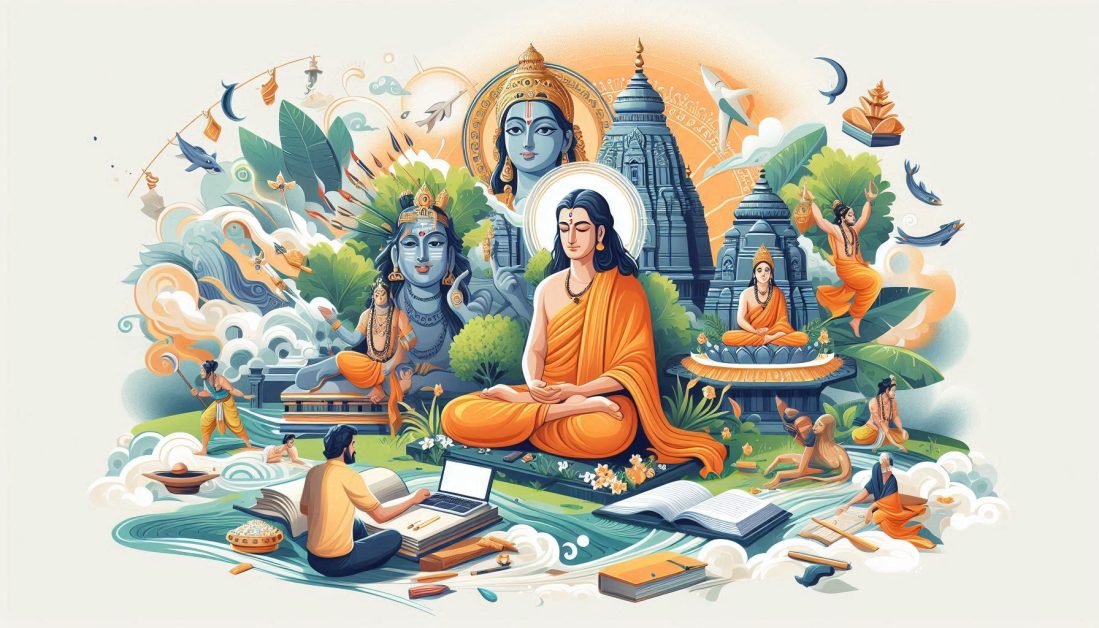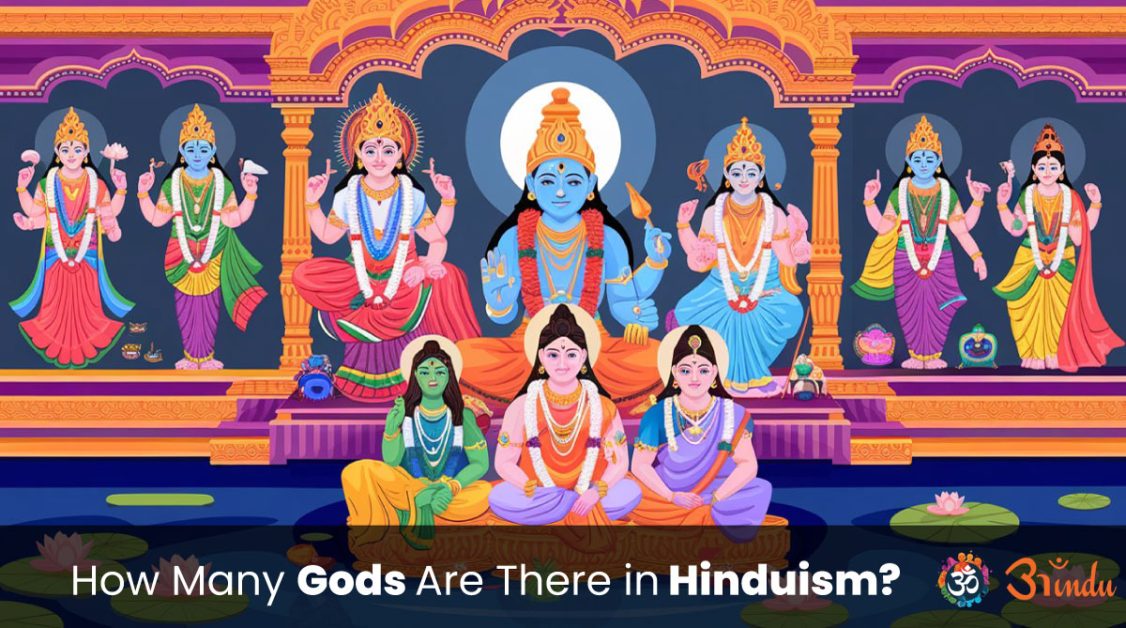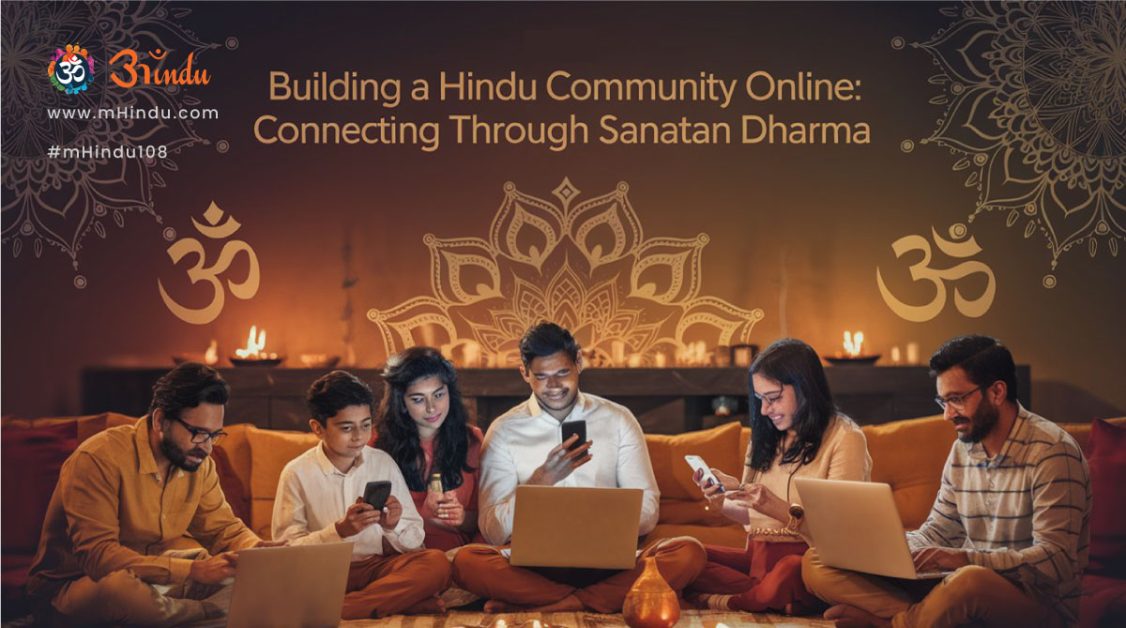
In the age of fast-scrolling thumbs and virtual lives, where every belief finds a digital voice, a profound yet often underrepresented movement is quietly awakening: the rise of the Hindu community online. For centuries, Sanatan Dharma—our eternal way—has flourished through oral traditions, handwritten scriptures, sacred pilgrimages, and face-to-face satsangs. But today, that same devotion finds expression in online forums, mobile apps, YouTube discourses, and WhatsApp bhajan groups.
Explore Blog Content
ToggleImagine a young Hindu in Toronto attending a digital Gita path with a guru in Varanasi. Or a homemaker in Chennai conducting online Devi puja circles with diaspora sisters in London. These aren’t just modern conveniences—they are the new sacred threads of Dharma, connecting our scattered beads into a single spiritual mala.
As Hindus across the world seek to stay rooted in tradition while embracing modern tools, the concept of a Hindu online community has taken a powerful shape. This blog explores how we can build, strengthen, and spiritually nourish these digital communities guided by the eternal light of Sanatan Dharma.
Why Are Hindu Online Communities Gaining Popularity?
The search for belonging is universal. For the Hindu diaspora and even urban dwellers within India, it is becoming increasingly difficult to maintain connections with temples, gurus, and spiritual traditions due to fast-paced lifestyles, migration, and social disconnect.
Enter the Hindu online community—a vibrant space where faith meets technology, where Sanatan Dharma breathes through screens.
Reasons behind the rise:
- Global Diaspora Needs: Millions of Hindus live outside India with limited access to temples or spiritual gatherings.
- Modern Lifestyles: Work schedules and distances make it hard to attend regular satsangs or pujas.
- Youth Engagement: Gen Z and millennials consume digital content; hence, Dharma must meet them where they are.
- Covid Acceleration: The pandemic forced many spiritual groups online, and they thrived there.
“Whatever action is performed by a great man, common men follow in his footsteps.” – Bhagavad Gita 3.21
When spiritual leaders embraced digital, devotees followed.
Where Do Hindus Connect Online? Key Platforms and Spaces
Let’s explore some of the most active spaces where Hindu spiritual networking happens:
- YouTube Dharma Channels From Swami Sarvapriyananda to ISKCON’s Krishna narrations, YouTube is now a digital katha mandapam.
- Telegram & WhatsApp Bhakti Groups Devotees share daily slokas, festival tips, and spiritual motivation. These function as micro-ashrams.
- Facebook & Reddit Sanatan Dharma Forums Reddit’s r/hinduism or private Facebook groups offer lively debates, scriptural studies, and support networks.
- Dedicated Apps like Sadhguru, Vedic Spirituality & mHindu These provide content, quizzes, events, and user discussions tailored for Sanatan Dharma followers.
- Online Satsang Platforms Portals like Zoom satsangs, Eventbrite spiritual meets, or Clubhouse spiritual rooms enable live interaction.
The key is not the tool—but the bhav (spiritual intent) with which we use it.
How Can You Join or Build a Hindu Community Online?
Let’s say you want to build or engage with a Hindu online community. Here are spiritually aligned, culturally rooted steps:
- Start with Your Niyat (Intent) Ask why you want to connect—learning, seva, bhakti, or support? Dharma begins with purpose.
- Use Your Strengths Are you good at singing bhajans? Start a weekly Instagram Live. A reader of scriptures? Launch a Substack.
- Create or Join Micro-Communities WhatsApp groups for daily Gita shlokas, Instagram handles for Sanskrit words, or Discord for Vedic science.
- Engage, Don’t Preach Hinduism is experiential. Rather than preaching, share your practice: how you celebrate Shivratri, why Tulsi is sacred to you, how fasting has helped you.
- Respect Diversity Within Dharma Followers of Shaivism, Vaishnavism, Shaktism, Smarta, etc. may all converge in one space. Embrace, don’t erase differences.
- Use Technology Thoughtfully Use Google Calendar for Ekadashi reminders, Google Meet for online pujas, Canva for festival posters. Infuse tech with Dharma.
How Do You Keep a Hindu Online Community Spiritually Alive?
It’s one thing to start a community. It’s another to sustain it with spiritual integrity and cultural depth. A Hindu online community must not become a noisy notification group—it must feel like a temple in your pocket.
- Consistent Rituals: Begin the week with a Monday Shiv mantra. Share Hanuman Chalisa every Tuesday. Structure provides rhythm, just like temple bells do.
- Monthly Themes: Focus on one idea a month—say, Dharma in Mahabharata, Devi devotion, or Vedic ecology. Let members contribute.
- Live Interactions: Host Zoom Gita discussions, livestream aarti, or do Navratri virtual garbas.
- User Participation: Ask members to share their stories: How they observe Ekadashi, what their grandmother taught about karma, or a photo of their home mandir.
- Spiritual Humor: Sanatan Dharma isn’t rigid. Share memes about Surya Namaskar fails or Krishna’s butter escapades. Laughter is sattvic too.
- Multimedia Bhakti: Combine images, audio, text, and video. Post a sloka, its chant audio, and a visual art around it.
“Dharma rakshati rakshitah” – Dharma protects those who protect it.
How Are Hindu Online Communities Transforming Youth and Diaspora?
Digital Hindu communities are doing more than just sharing slokas—they’re shaping the future of Sanatan Dharma itself. Youth and diaspora populations, often viewed as distanced from traditions, are now rediscovering their roots online.
- Making Dharma Cool Again Reels on Mahabharata, Krishna memes, Sanskrit chants turned into raps—youth relate without dilution.
- Diaspora Finds a Digital Temple A Tamilian in Melbourne and a Gujarati in Texas join the same Navratri livestream. Identity is preserved across oceans.
- Language Revival Telegram groups teach Sanskrit one verse at a time. Memes in Hindi, Tamil, Gujarati keep native tongues alive.
- New Gurukul Models Online courses from Chinmaya Mission, Vedic Institute of Canada recreate Gurukul systems virtually.
- Bridging Gaps Digital platforms allow rural women, marginalized voices, and temple priests equal presence and respect.
- Festival Celebrations With Family Back Home Diyas lit together on Zoom, aarti over WhatsApp—distance is dissolved.
Challenges and How to Maintain Authenticity in Hindu Online Spaces
Every sacred space attracts both seekers and skeptics. The digital dharmakshetra has its own demons:
- Misinformation: Not every post quoting the Gita is accurate. Cross-reference with authentic translations like those from Gita Press or ISKCON.
- Troll Culture: Avoid arguments. Don’t respond to hate with hate. Block, report, or disengage.
- Guru Shopping: With hundreds of online spiritual voices, discernment is key. Stick with lineage-based teachings or established schools.
- Overcommercialization: Dharma mustn’t become clickbait. Respect the sacredness even while posting online.
“Shraddhavan labhate jnanam” – One with faith gains wisdom. – Bhagavad Gita 4.39
Practice digital shraddha. Validate before you share. Engage with reverence.
Conclusion: From Mandir Walls to Digital Halls
Building a Hindu online community is not about likes or virality. It’s about keeping the sacred alive—across time zones, through data cables, in hearts far from home.
When we chant a mantra in a comment thread, when we share a sloka with strangers, when we guide someone lost back to Dharma—these are acts of online yajna.
Let us not treat these spaces as mere groups, but as virtual mandirs—where the murti is our intention, and the puja is our daily interaction.
Sanatan Dharma has always evolved—now, it’s just wearing Wi-Fi.
Frequently Asked Questions (FAQs)
1. How can I join a Hindu online community if I’m new to Sanatan Dharma?
You can start by joining social media groups or apps like mHindu, or attending YouTube satsangs. Begin with curiosity and respect—most communities are welcoming and supportive to sincere seekers.
2. Are Hindu online communities only for Indians?
No. Hindu online communities welcome all who resonate with Sanatan Dharma’s universal values. Whether you’re from India or any part of the world, your bhakti (devotion) matters more than your geography.
3. What are the best platforms for Hindu spiritual networking?
Telegram, WhatsApp, YouTube, and apps like mHindu or the Chinmaya Mission platform are excellent for connecting with like-minded devotees.
4. Can I learn scriptures like the Gita online effectively?
Yes. Several platforms offer structured courses, live classes, and discussion groups. Channels like ISKCON or Swami Sarvapriyananda’s Vedanta series on YouTube are great places to begin.
5. How do I verify if an online Hindu teacher or guru is authentic?
Look for lineage (parampara), consistency with scriptures, and transparency. Stick with well-known institutions or gurus affiliated with recognized spiritual traditions.
6. What are online satsang platforms?
These are digital gatherings for chanting, discussions, and teachings. They happen via Zoom, YouTube Live, or even Clubhouse rooms. Many follow temple-like discipline and respect.
7. How can I create my own Hindu devotional group online?
Choose your theme (e.g., daily sloka, Devi worship), set your intent clearly, pick a platform (Telegram, WhatsApp), and invite friends who’ll commit. Keep the space respectful, focused, and positive.
8. Are there any risks in joining Hindu online groups?
Avoid sharing personal information in public forums. Stay alert to misinformation or those misrepresenting Dharma. Use secure platforms and moderate group interactions respectfully.


